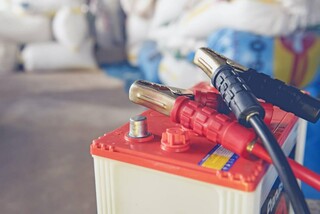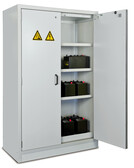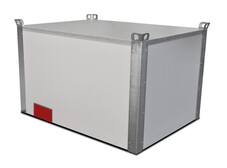Lithium-ion batteries are among the lightest batteries and are therefore widely used in electronic equipment, including laptops, phones or drones. Lithium-ion cells are already beginning to be used in electric vehicles and as stationary energy storage for renewable energy sources. Although these batteries have been in widespread use for years, not everyone knows how to care for them or how to extend their service life.
Hazards posed by lithium ion batteries
Lithium ion cells are quite unstable designs. For this reason, some time ago a leading consumer electronics company had to recall several million laptop batteries with a tendency to overheat quickly. To prevent dangerous accidents, experts recommend storing lithium-ion batteries in cool places, but without exposing them to sub-zero temperatures. Why is this important? Because keeping batteries near a radiator or in a hot car, for example, shortens their lifespan. Remember, however, that more important than the issue of appropriate storage conditions is the fact that charging such batteries in inappropriate temperature, i.e. below 5 °C or above 30 °C, threatens not only damage of cells and loss of warranty, but even fire or explosion.
Responsibilities of producers and users
The real danger of explosion, ignition or battery leakage, and consequently electrolyte leakage, obliges manufacturers to produce battery cells with protection systems. These are to protect against over-discharge and over-charging. When the first generations of devices equipped with lithium-ion batteries were just entering the market, many companies had considerable problems with this and therefore there were cases of explosions, for example in notebooks from one of the popular laptop and computer manufacturers.
It is up to the user to store devices equipped with lithium ion batteries and the batteries themselves in appropriate conditions. This is all the more true since batteries are subject to uncontrolled release of accumulated energy both during improper storage and when charged and used.
Solutions for industry

Where lithium ion batteries are used extensively, for example in industrial plants, it is worth taking steps to protect employees, the workplace and the environment from fire, chemical reactions and even more so from explosion. It is with this in mind that advanced lithium-ion battery cabinets and other solutions have been developed to safely charge and store batteries.
Since overheating during charging, but also deep discharging, the use of the wrong charger, mechanical damage or high ambient temperatures can cause a fire or explosion, proper storage of batteries is crucial. For this purpose, fireproof safety cabinets, fireproof containers or even specially designed fireproof rooms are best suited. Also noteworthy is the portable fireproof cover for universal use, which provides protection for production or storage areas from the effects of fire. Its design means that it can be applied directly to battery pallets.
Read also: Cabinets for flamable materials. What does the market offer?
Characteristics of fireproof cabinets for lithium batteries
Fire resistant cabinets are the most popular among the solutions mentioned above. A wide range of available models allows you to match the appropriate product to individual needs. Among the proposals of manufacturers there are single- and double-leaf cabinets with double-sided fire resistance, equipped with such solutions as:
1. self-closing doors in the event of fire,
2. protection against unauthorised access,
3. smoke detectors,
4. ventilation,
5. earthing that encapsulates the cabinet during a fire,
6. built-in fireproof baffle for discharge of charging cables.
The certified lithium battery cabinets that Hartmann Tresore offers provide complete safety and also look very aesthetically pleasing. They are easy to install and come in a wide range of colours.
The lithium battery storage cabinets are designed to take into account all aspects of their hazard potential. Their warning systems make it possible to take action at the first sign of fire, such as rising temperatures or smoke. It is possible to integrate the cabinets into the overall building management system. If you are looking for secure storage of energy resources, take a look at Hartmann Tresore's range and select a cabinet model to suit your individual needs.
This may be interesting for you: Storage of hazardous materials




